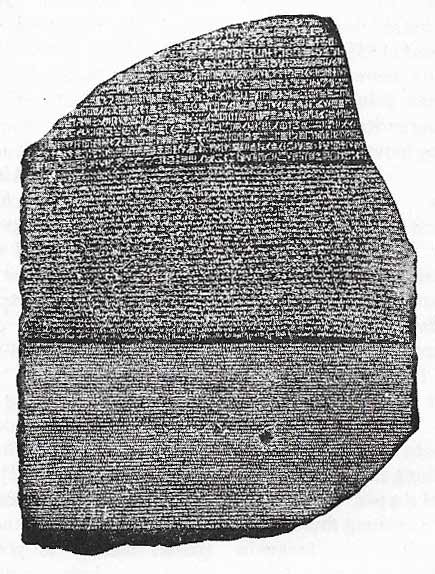Rosetta Stone

The Rosetta Stone is an inscribed basalt slab, discovered in 1799, which provided the key to hieroglyphics and opened the way to the development of Egyptology as a scientific study. About 1.2 meters long and 0.75 meter wide, it contains the text of a priestly decree (c. 197 BC). It is inscribed with identical texts, the top part being in Egyptian hieroglyphs, the middle in Egyptian demotic, and the bottom in Greek.
Comparison of the Greek with the hieroglyphic eventually enabled the latter to be deciphered. A major step was the recognition that characters inside circles, known as cartouches, represented the names of rulers of Egypt. Decipherment was begun by Thomas Young (c .1818) and completed by Jean François Champollion (c. 1821–22). Found during Napoleon's Egyptian expedition near Rosetta, Egypt, it is now in the British Museum.
